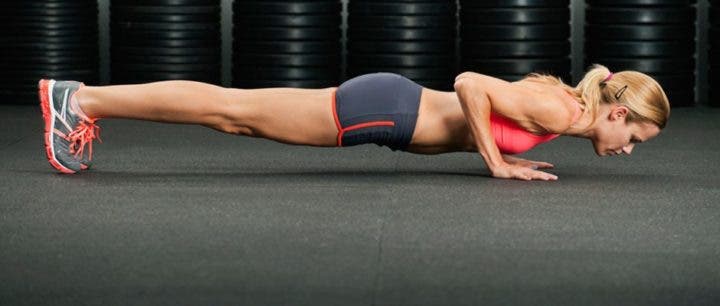Aerobic exercise is very good for losing fat and can work for many people, but we run the risk that our bodies get used to constant exercise and that we need longer training sessions to continue losing calories.
Fortunately, we have an alternative to continue burning fat and, what is better, in less time: HIIT (High Intensity Interval Training). With HIIT we will raise our heart rate (HR) a lot for short periods of time, which will allow us to accelerate our metabolism and lose that fat that refuses to disappear. Let’s see how it is done and what benefits it has.
What is HIIT?
HIIT is a form of exercise in which you combine light-moderate intensity physical activity with short periods of maximum effort where your body falls within the anaerobic threshold.
Typically, these intervals can last from 30 seconds to 3 minutes. Your HR should then be around 80-95% of your maximum HR (150-170 beats). If the intervals are of long duration (more than 2 minutes) it is very important that the intensity of these is not excessively high, otherwise you will exhaust yourself very quickly.
In active rest periods your HR should be between 50-75% of its maximum. ( 130-150 beats ). They should last a little longer than the intervals, so that it gives you enough time to recover and face the next effort with strength.

How to practice HIIT?
You can choose any type of activity that you like (fast walking, cycling, running, swimming, working with weights or kettlebells…). To do it:
- Do a 5 minute warm up.
- Then do a high intensity interval for 1 minute.
- Rest for 2 minutes doing the same activity at a lighter intensity.
- Repeat the sequence 3-4 times and as your fitness improves increase it up to 8-10 intervals.
- When you’re done, do 5 minutes of light intensity to cool down.
The times we have given you can vary depending on your training goals, but make sure that the recovery time is long enough, since it is usually the main mistake made by people who cannot complete a HIIT session.
Do you want to try a more demanding but very effective HIIT routine? Try Stoked 360.

What are the benefits of HIIT?
- Significantly increases both aerobic and anaerobic capacity.
- Decreases insulin values in periods of fasting.
- Increases sensitivity to insulin.
- Reduces both abdominal and subcutaneous fat.
- You need little time to do it. According to Nalcakan (2014), 2-3 25-minute sessions including warm-up and cool down could be sufficient.
- EPOC (Post-Exercise Oxygen Consumption) forces our body to need to continue consuming oxygen after finishing training, which helps to burn calories while at rest .

Is HIIT Safe?
Many people may be afraid to do this type of training because they bring their HR very close to their maximum capacity.
HIIT is totally safe if performed by people in good health. In fact, it helps to greatly improve cardiovascular function and prevent the onset of cardiovascular diseases (Gaesser and Angadi, 2011).
However, it is very important that before doing HIIT you frequently consult with a medical professional to see if it is recommended in your particular case. If possible, also undergo a stress test where they can specify your normal and maximum HR.
It would also be positive if you have a heart rate monitor that allows you to know when you have reached the desired HR, in this way you can do HIIT with greater security.
References
- Gaesser, GA and Angadi, SS (2011). High-intensity interval training for health and fi tness: can less be more? Journal of Applied Physiology, 111, 1540-1541.
- High-Intensity Interval Training. For Acefitness.org [Revised October 2015].
- Nalcakan, GR (2014). The Effects of Sprint Interval vs. Continuous Endurance Training on Physiological And Metabolic Adaptations in Young Healthy Adults. Journal of Human Kinetics, 44, 97-109.
